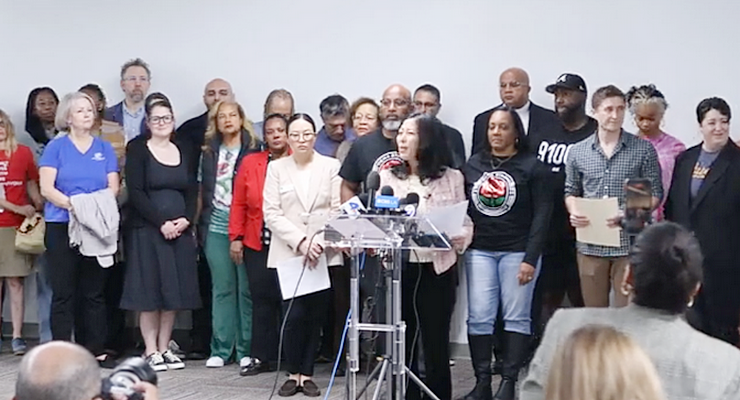
The Pasadena City Council is set to adopt an ordinance on Monday that will make it easier to convert many existing non-residential buildings into housing, part of the city’s efforts to address housing shortages while promoting sustainable development practices.
The ordinance amends various sections of the Pasadena Municipal Code to create a streamlined pathway for adaptive reuse projects.
The changes will allow developers to bypass certain zoning restrictions when converting commercial properties to residential use, potentially unlocking new housing opportunities throughout the city.
A key provision explicitly excludes hotels and motels from the adaptive reuse ordinance, though under current Pasadena law, hotels of under 80 rooms may be converted to affordable housing.
The Planning and Community Development Department has recommended “revisiting and studying whether these uses should be subject to the adaptive reuse ordinance” at a later date, potentially as part of a future code amendment.
According to the staff report from the City Attorney’s office, “This legislation is consistent with the City’s General Plan, which calls to incentivize adaptive reuse of nonresidential buildings and to adopt an ordinance to allow such adaptive reuse.”
The amendments are designed to provide flexibility on issues including parking requirements, building height, and setbacks that often create barriers to repurposing older structures.
UNITE HERE Local 11, a labor union representing hospitality workers, submitted correspondence supporting some streamlining of housing development but expressing concerns about hotel conversions. The union noted that with Los Angeles County set to host FIFA World Cup matches in 2026 and the Olympic Games in 2028, there could be tension between housing and tourism priorities that requires careful consideration.
Buildings become eligible for adaptive reuse provisions five years after the certificate of occupancy is issued for the non-residential building.
The ordinance introduces a range of incentives for developers undertaking adaptive reuse projects, including exemptions from dwelling unit per acre requirements, flexibility on floor area ratios for modifications within existing buildings, and height allowances of up to 15 additional feet for residential amenities such as pools or fitness centers.
The ordinance requires a minimum average unit size of 450 square feet, with exceptions for projects that are 100% affordable or have fewer than 10 units. Each dwelling unit must have at least 150 square feet of open space, which can include common areas like lobbies with residential amenities and accessible rooftop areas.
Limited new construction is permitted in conjunction with adaptive reuse projects, allowing up to a 50% increase in units or up to the maximum General Plan density, whichever is less.
Parking requirements have also been relaxed under the new rules. No new parking spaces will be required for adaptive reuse projects, and the ordinance includes provisions for “car-share” options that can further reduce the parking spaces needed.
The changes will also modify the review authority for shared parking, tandem parking, and variances for historic resources, streamlining the approval process in many cases. The ordinance includes special provisions for historic resources, including a unique type of variance designed to accommodate historic resources undergoing development, change in use, or relocation.
All adaptive reuse projects meeting the ordinance criteria will undergo a consolidated design review process with the Director designated as the review authority, regardless of project size thresholds that would normally trigger Design Commission review.
The City Council found that the ordinance complies with the California Environmental Quality Act through an Addendum to the 2015 Pasadena General Plan Environmental Impact Report. The Council determined it “would not result in any potentially significant impacts that were not already analyzed” and no further environmental study is required.
City staff have confirmed there will be no fiscal impact as a result of this ordinance amendment. The Planning and Community Development Department will be responsible for implementing the new regulations.
The second reading of the ordinance will take place at the City Council meeting on Monday, March 3 in Council Chambers at City Hall as Agenda Item No. 7.
The public can attend in person or watch the meeting via local cable channels or online streaming through the city’s website.
If approved, the ordinance will take effect 30 days after publication.


















